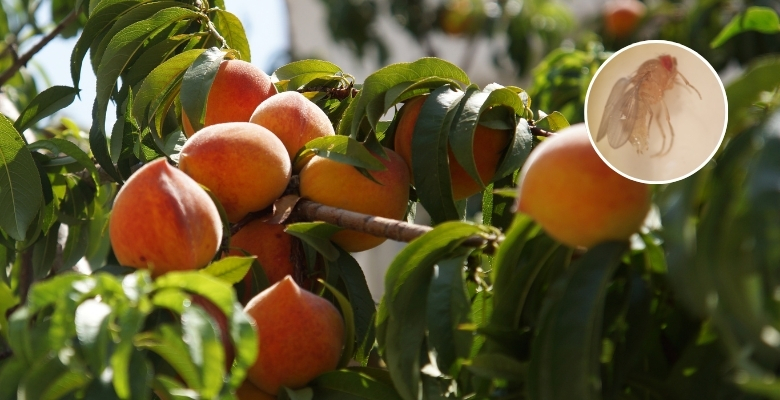From Bloom to Harvest: Managing Stone Fruit Orchards in California 2025
California’s stone fruit orchards are the lifeblood of the state’s agricultural identity, producing bountiful peaches, plums, cherries, and nectarines enjoyed worldwide. Yet, with the 2024 growing season came a formidable challenge: an uptick in Spotted Wing Drosophila (SWD) infestations. This invasive pest, targeting ripening fruit, has posed significant threats to fruit quality and yield, leaving many growers searching for effective solutions.
The Pest in Focus: Spotted Wing Drosophila
Unlike most fruit flies, which lay eggs in overripe fruit, SWD targets firm, ripening fruit, making it especially devastating for stone fruit growers. In 2024, unseasonably warm spring temperatures accelerated SWD populations across California’s orchards, forcing growers to reassess their pest management strategies.
Signs of an SWD Infestation
- Small puncture marks on fruit are caused by egg-laying females.
- Soft spots or rapid fruit decay near harvest.
- Larvae visible within harvested fruit.

An Integrated Approach to Combat SWD
Combatting SWD requires an Integrated Pest Management (IPM) approach, combining monitoring, cultural practices, and targeted treatments. Here are key strategies California growers have adopted.
Vigilant Monitoring
Regular monitoring is the cornerstone of effective SWD control:
- Use vinegar or yeast-based traps to detect adult flies early. Place traps at canopy height and around orchard borders to assess SWD pressure.
- Record trap counts and monitor trends over time using Farmable’s intuitive monitoring notes. This ensures accurate treatment timing and reduces unnecessary sprays.
Accurate record-keeping and IPM tracking are vital for successful pest management. Platforms like Farmable streamline the documentation of interventions and yield data, helping growers adjust strategies proactively.
Adopting digital tools like Farmable helps simplify complex pest management workflows. Here’s how:
- Trap Data Logging: Record SWD trap counts directly in Farmable for real-time insights into pest pressure.
- Spray Journal: Maintain a detailed spray history, ensuring compliance with resistance management guidelines.
- Team Coordination: Assign tasks like fruit removal or pruning to teams, track progress, and ensure all critical steps are covered.
Canopy Management
SWD thrives in shaded, humid environments:
- Pruning Practices: Thin canopies to improve airflow and reduce humidity.
- Sanitation: Remove fallen or overripe fruit promptly to eliminate breeding grounds.
Targeted Sprays
Effective chemical control requires precise application:
- Rotate insecticides with different modes of action to prevent resistance. Look at the IRAC website for more information.
- Time sprays based on trap data and fruit ripening stages to maximize efficacy.
Looking Ahead
With vigilance, collaboration, and the adoption of modern tools, California’s stone fruit growers can successfully manage pests like SWD and protect their crops. The lessons of 2024 highlight the importance of combining tried-and-true practices with innovative technology to thrive in an ever-changing agricultural landscape.
Are you interested in simplifying your orchard management? Explore how digital tools like Farmable can enhance your IPM program and streamline record-keeping.
- How to get started using Farmable:
https://farmable.tech/blog/getting-started-farmable-farm-management-app/ Pest monitoring and management:
https://farmable.tech/blog/pest-monitoring-and-management/Integrated Pest Management: chemical vs biological
https://farmable.tech/blog/integrated-pest-management-biological-chemical/- Integrated Pest Management & Farmable: a powerful duo https://farmable.tech/blog/ipm-farmable-powerful-duo-for-modern-agriculture/

